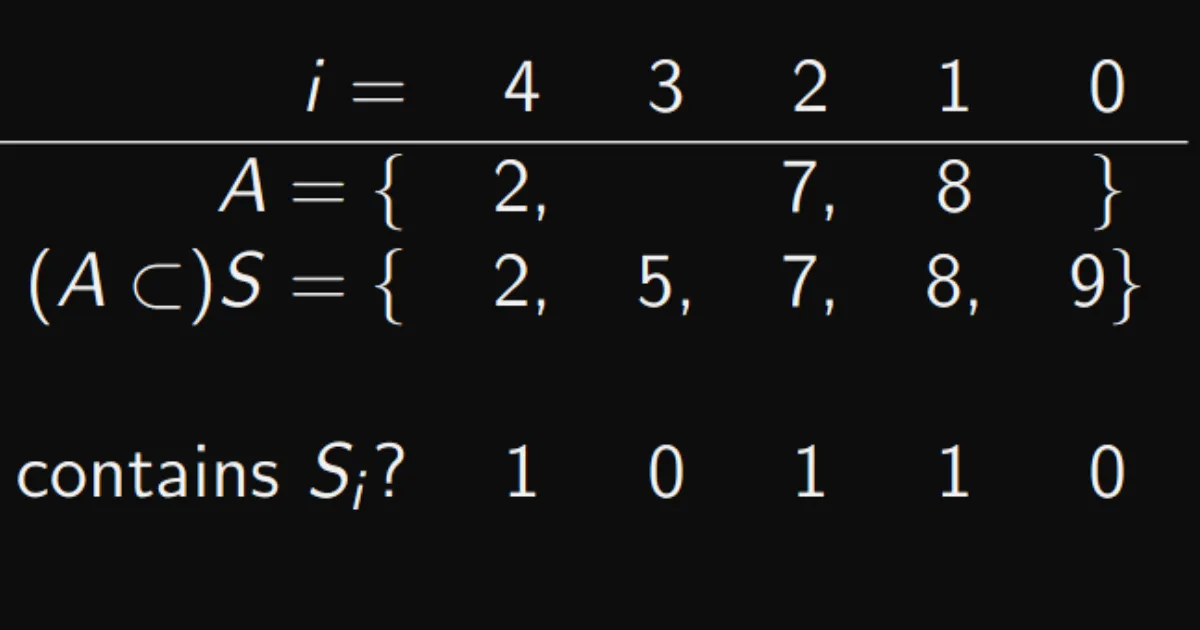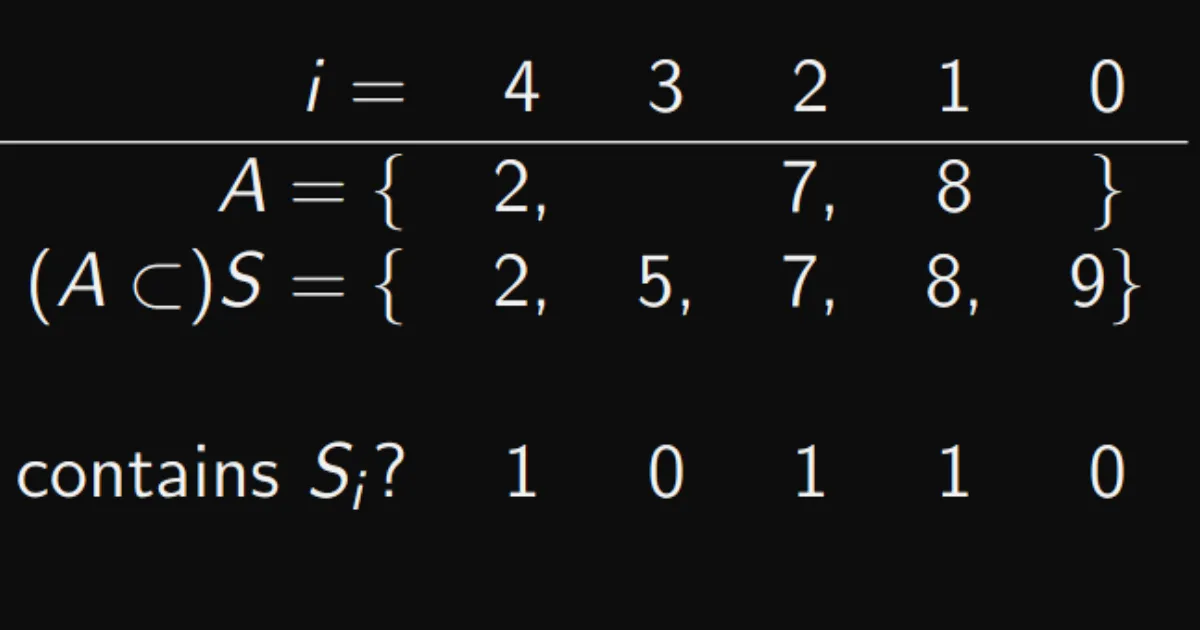Correspondence between Sets and Boolean operators
There exists a correspondence between n-bit numbers and subsets of n element sets.
Function fS , which for a set S containing n elements
• Outputs a unique n-bit number for each subset of S
• Has the property that every n-bit number will correspond to some subset of S
• i.e. fS is a bijection
This will immediately prove that |P(S)| = 2^n , i.e. the power set of any n-element set contains 2n elements

Characteristic function of set A, denoted by χA(a) returns 1 if a ∈ A and 0 if a ̸∈ A
Importantly, this encoding is unique for each subset A of S, and must be in the range
Uniqueness follows from the element ordering Si and their correspondence with bit i in the output number.
This also proves the important property about the length of a power set.
Now suppose we encode sets A and B as n-bit numbers, respectively, fS (A) and fS (B)
With the superset S, suppose we encode sets A and B as n-bit numbers, fS (A) and fS (B)
How does this increase efficiency of set operations?
Suppose we have three sets A, B and C that are subsets of S and we want to compute:
Using traditional data structures, this might involve multiple passes through the elements to build the union of A and B, and then another pass to intersect with C. If there are many elements in 𝑆 and you need to perform this operation multiple times, the cost becomes significant.
Instead..
This expression involves two simple bitwise operations, each of which is performed in constant time, making it highly efficient regardless of the size of the sets or the number of operations required.
